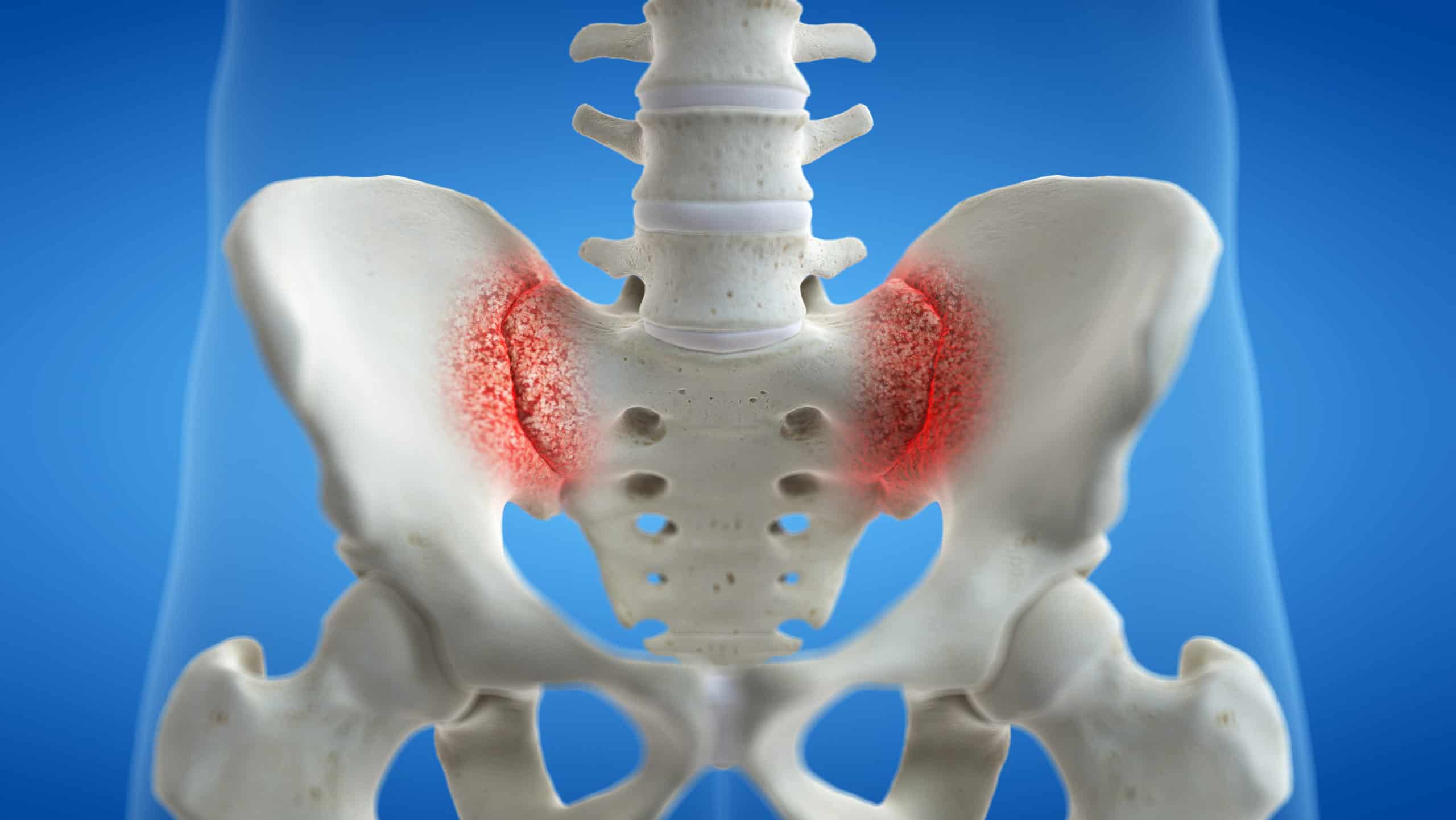Sacroiliac Joint Injection
Lower back pain is a common ailment that may arise from a variety of issues ranging from sciatica and bulging or herniated discs to compressed nerves and torn or pulled muscles or ligaments. Sacroiliac joint dysfunction is one cause of lower back pain, and it’s responsible for as many as 27% of lower back pain cases.


A sacroiliac joint injection introduces an anesthetic and/or a steroid into the painful sacroiliac joint. The procedure only takes a few minutes, and it’s done on an outpatient basis.
How Does a Sacroiliac Joint Injection Work?
The person lies face down on the radiography table with pillows under the hips for comfort. The doctor may administer intravenous medication to help the person relax. The skin covering the painful sacroiliac joint is cleansed, covered with sterile drapes and numbed. The doctor inserts a needle into the joint using ultrasound, a CT scan or an X-ray with dye to help them guide the needle to the proper location. A local anesthetic and/or an anti-inflammatory medication, such as a corticosteroid, are injected into the joint. The doctor then removes the needle, washes the injection site and applies a bandage.
Following the procedure, medical staff members monitor the person for about 30 minutes to ensure no adverse reactions occur, such as an allergic reaction or weakness or numbness of the legs. The person is then discharged.
Are you a good candidate for Sacroiliac Joint Injection?
-
Positive
You have lower back pain.
-
Positive
You have pain in the lower back or buttocks that extends down to the backs of one or both legs.
-
Negative
You have congestive heart failure, a bleeding disorder, or uncontrolled diabetes mellitus.
-
Negative
You have an infection on the site of the planned injection.
-
Negative
You’re pregnant.
Frequently asked questions
How Effective Is a Sacroiliac Injection Procedure?
The anti-inflammatory medication may take two to three days to produce results, so once the numbing medication wears off following the sacroiliac injection, the patient may experience an increase in pain for a few days. Once the anti-inflammatory medication kicks in, pain is likely to subside.
Sacroiliac injections typically provide temporary relief from lower back pain, and results vary from one person to another. Some people may find symptom relief only lasts for a few days or weeks while others enjoy pain relief that lasts for months. The entire procedure may be repeated every four months. Some people notice the pain relief lasts longer after they receive subsequent injections, but others find the effectiveness of repeated injections diminishes.
In some cases, a sacroiliac injection doesn’t produce desired results. The procedure has a reported 10% failure rate.

What Are the Potential Side Effects of a Sacroiliac Injection?
People typically tolerate a sacroiliac injection well and have few side effects. Soreness and/or bruising may occur at the site of the injection, and applying ice may help alleviate those issues.
In rare cases, infection at the site of the injection, in the deeper tissues or in the joint is possible. Trauma to the nerves may take place, or the medication may be injected into the wrong area. In some people, the procedure may increase pain and soreness.

What Is a Sacroiliac Injection Used For?
A doctor may use a sacroiliac injection to help diagnose the source of lower back pain or to help alleviate lower back pain. If the procedure is used for diagnostic purposes, the doctor may only inject a numbing medication into the sacroiliac joint.
Following the injection, the person tries to reproduce the pain by undertaking activities that normally cause the pain to occur. If the patient experiences a 75-80% reduction in pain, the doctor tentatively confirms the sacroiliac joint as the source of the pain. The person may have to undergo a second sacroiliac injection using a different numbing agent to confirm the diagnosis.
When the doctor uses the sacroiliac injection to treat lower back pain, they inject an anti-inflammatory medication into the joint in addition to the numbing agent. If the person experiences a significant reduction in pain, they may then participate in a physical therapy or rehabilitation regimen to further reduce pain and regain normal functioning.

What Is Recovery after an SI Joint Pain Treatment Like?
Following the SI joint therapy, the person receives specific instructions to help them achieve the best outcome. The person needs to limit their activities for the rest of the day following the procedure, especially if they received sedating medications to help them relax. If the procedure involved use of an injected dye, the person needs to drink plenty of water to flush the dye from the body. It’s best to avoid bathing, showering or soaking in a hot tub for the rest of the day.
If severe pain or new numbness or weakness occurs in the legs, the person should notify their doctor. They also need to let the doctor know if they run a fever or if signs of infection, such as redness, swelling or discharge, occur at the site of the injection.
Northeast Spine and Sports Medicine specializes in providing pain relief using a range of treatment methods, from chiropractic, acupuncture and massage therapies to surgical procedures, injections and physical therapy. The professionals in this multi-specialty medical group can evaluate and diagnose your condition and design and carry out a comprehensive and effective treatment plan. With multiple locations in Ocean and Monmouth counties, there’s bound to be a convenient office near you. Contact Northeast Spine and Sports Medicine today to set up an appointment and begin your journey toward recovery.

